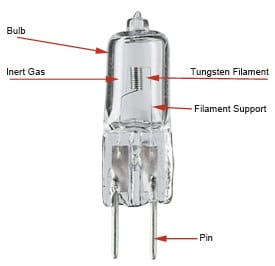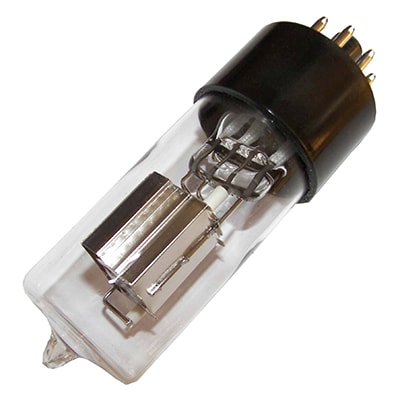What types of light sources are used in a typical spectrophotometer?
-
Tungsten-Halogen Lamp

-
Deuterium Lamp

You need a light source which gives the entire visible spectrum plus the near ultraviolet so that you are covering the range from about 175 nm all the way out to 3300 nm. You can’t get this range of wavelengths from a single lamp, and so a combination of two is used, a deuterium lamp for the UV part of the spectrum, and a tungsten/halogen lamp for the visible part. The tungsten lamp emits light from about 340 nm in the UV region up to over 3500 nm in the near infrared. These lamps are similar to the high intensity tungsten/halogen lamps you find in the home (Left).
The deuterium lamp (right) is a gas discharge light source that uses deuterium gas (an isotope of hydrogen that contains an additional neutron in its nucleus). A deuterium lamp emits light in the near ultraviolet and ultraviolet regions from 150 nm to 400 nm (Right). A deuterium lamp contains deuterium gas (an isotope of hydrogen) under low pressure subjected to a high voltage. It produces a continuous spectrum in the part of the UV spectrum we are interested in. The combined output of these two sources is focused on to the monochromator entrance slit.


